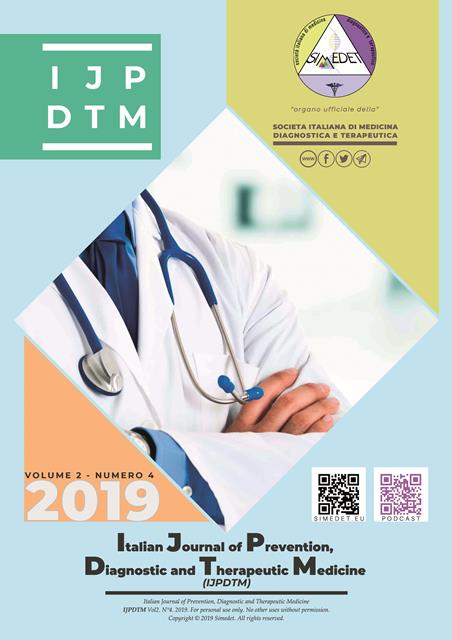Management of chest trauma closed in an emergency
Main Article Content
Abstract
Closed lung trauma are frequent and severe, especially when associated to other trauma such as brain or abdomen once. These could cause acute respiratory insufficiency. Research and treatment of the pneumothorax (that could even be hypertensive) are two of the main aims, together with the pain treatment. In emergency the treatment is related to the cause of the trauma, the exam of the patient and the radiological images. Finding the right treatment for patients with lung trauma is still a challenge. Anyway the advances in technological procedures and radiological techniques, helps the early diagnosis of the potentially fatal injuries. The use of the ultrasound both on the surrounding as in the emergency room is constantly improving, even though there aren’t guidelines yet neither precise indications on the use and clinical significance of some findings. It is fundamental to follow a standardized plan to treat a traumatized patient from the surrounding in order to recognize and treat, as soon as possible, severe disease and stabilize the patient till the definitely treatment.
Downloads
Article Details

This work is licensed under a Creative Commons Attribution-NonCommercial-NoDerivatives 4.0 International License.
References
Weir S, Salkever DS, Rivara FP, Jurkovich GJ, Nathens AB, Mackenzie EJ, et al. One-year treatment costs of trauma care in the USA. Expert Rev Pharmacoecon Outcomes Res. 2010;10:187–97.
Sirmali M, Türüt H, Topçu S, Gülhan E, Yazici Ü, Kaya S,Tafltepe I. A comprehensive analysis of traumatic rib fractures:morbidity, mortality and management. European Journal ofCardio-thoracic Surgery 2003;24:133-138.
Bauman Baumann MH, Strange C, Heffner JE, et al. Management of spontaneous pneumothorax: an American College of Chest Physicians Delphi consensus statement. Chest 2001;119:590–602.
Myers JB, Slovis CM, Eckstein M, Goodloe JM, Isaacs SM, Loflin JR, et al. Evidence-based performance measures for emergency medical services systems: A model for expanded EMS benchmarking. Prehosp Emerg Care. 2008;12:141–51
Sutyak JP, Wohltmann CD, Larson J. Pulmonary contusions and critical care management in thoracic trauma. Thorac Surg Clin 2007;17(1):11-23.
Teuben M, Löhr N, Jensen KO, et Al. Improved pre-hospital care efficiency due to the implementation of pre-hospital trauma life support (PHTLS®) algorithms. Eur J Trauma Emerg Surg. 2019 May 11. doi: 10.1007/s00068-019-01141-1.
Massen H, Mercat C. Intérêt des explorations par les ultrasonsdans les véhicules de transport primaires d’urgence des malades oublessés. Rev SAMU 1983;7:321-4.
Ketelaars R, Hoogerwerf N, Scheffer GJ. Prehospital chest ultrasound by a Dutch helicopter emergency medical service. J Emerg Med. 2013;44:811–7.
Yates JG, Baylous D. Aeromedical ultrasound: The evaluation of point-of-care ultrasound during helicopter transport. Air Med J. 2017;36:110–5.
S Di Bartolomeo, G Sanson, G Nardi, et Al.A population-based study on pneumothorax in severely traumatized patients. Journal of Trauma and Acute Care Surgery 51 (4), 677-682.
Leblanc D, Bouvet C, Degiovanni F et Al. Early lung ultrasonography predicts the occurrence of acute respiratory distress syndrome in blunt trauma patients. Intensive Care Med. 2014;40(10):1468-74.
Wanek S, Mayberry JC. Blunt thoracic trauma: Flail chest, pulmonary contusion, and blast injury. Crit Care Clin 2004;20(1):71-81.
Pneumomediastinum Diagnosed on Ultrasound in the Emergency Department: A Case Report. Beason H, Markowitz J, et all. Perm J, 2015
Practice Management Guidelines for Management of Hemothorax and Occult Pneumothorax Nathan T. Mowery, MD, Oliver L. Gunter, MD, Bryan R. Collier, DO, Jose’ J. Diaz, Jr., MD, Elliott Haut, MD, Amy Hildreth, MD, Michelle Holevar, MD, John Mayberry, MD, and Erik Streib, MD
Teuben M, Löhr N, Jensen KO, et al. Improved pre-hospital care efficiency due to the implementation of pre-hospital trauma life support (PHTLS®) algorithms. Eur J Trauma Emerg Surg. 2019 May 11. doi: 10.1007/s00068-019-01141-1.
Dennis M and Duddy R. The lung and chest wall diseases. In: Murray Jand Nadel J (ed). Textbook of Respiratory Medicine, 3rd ed., WB SaundersCo, 2000; 2: 2044-55.

